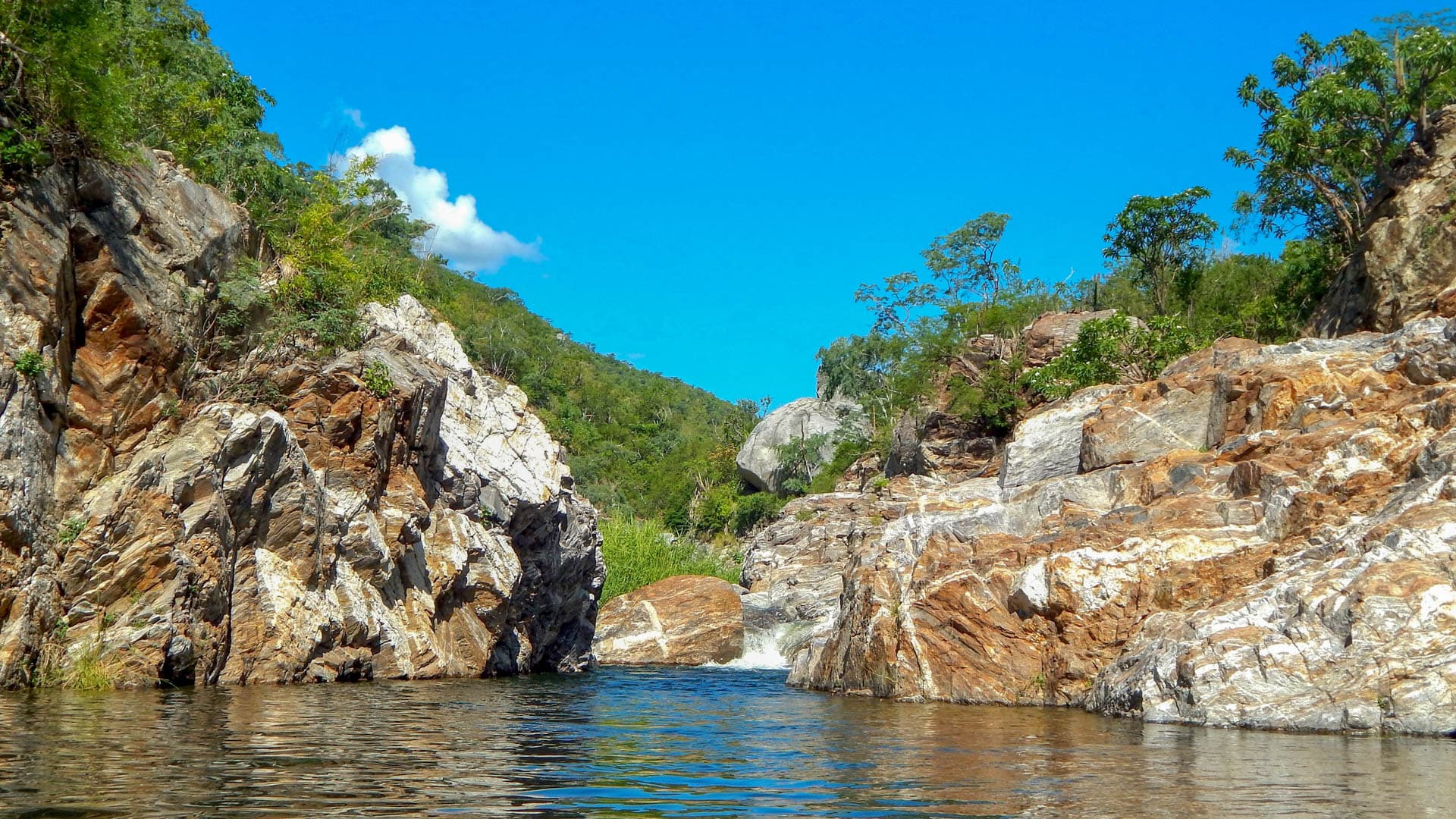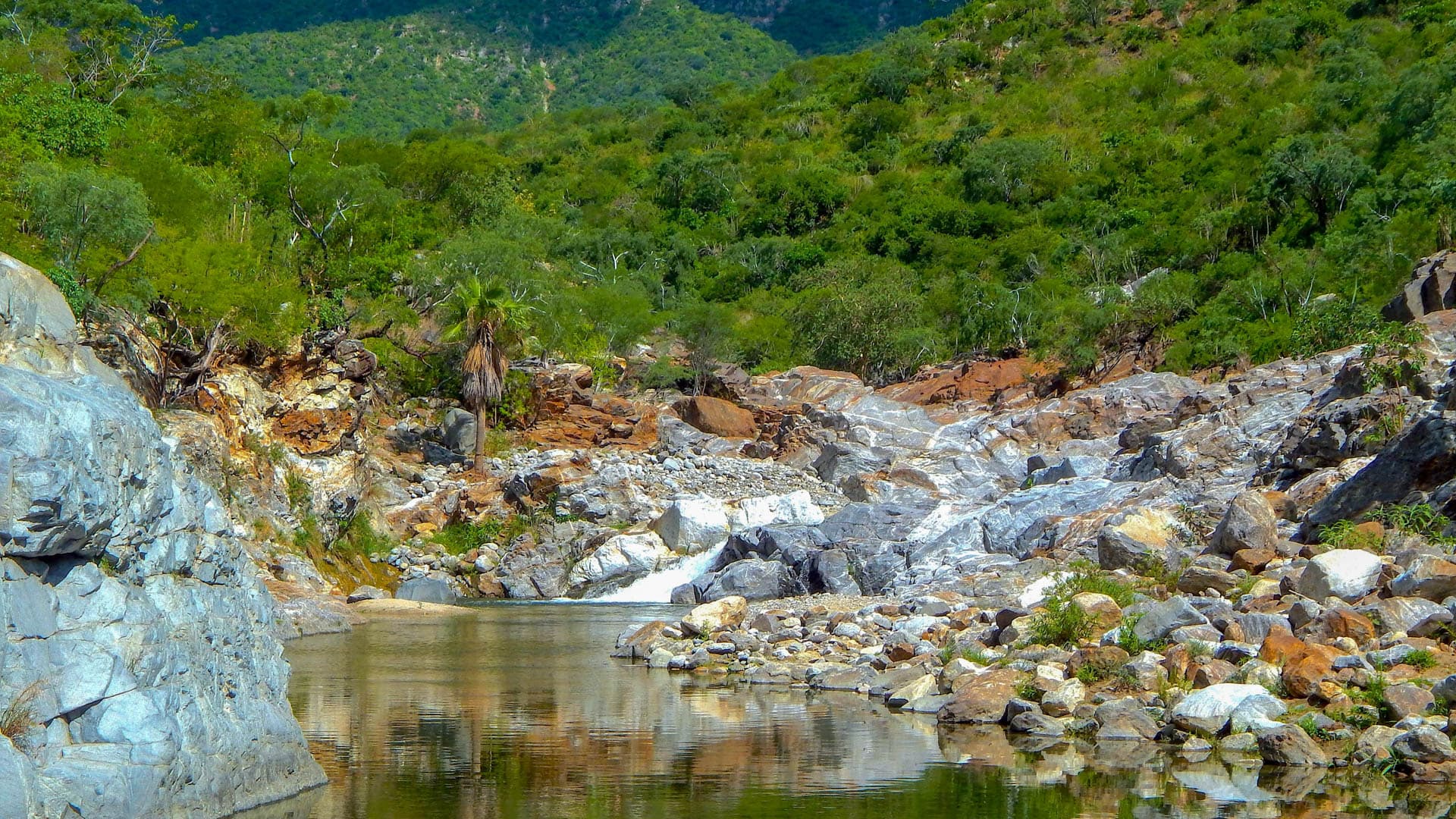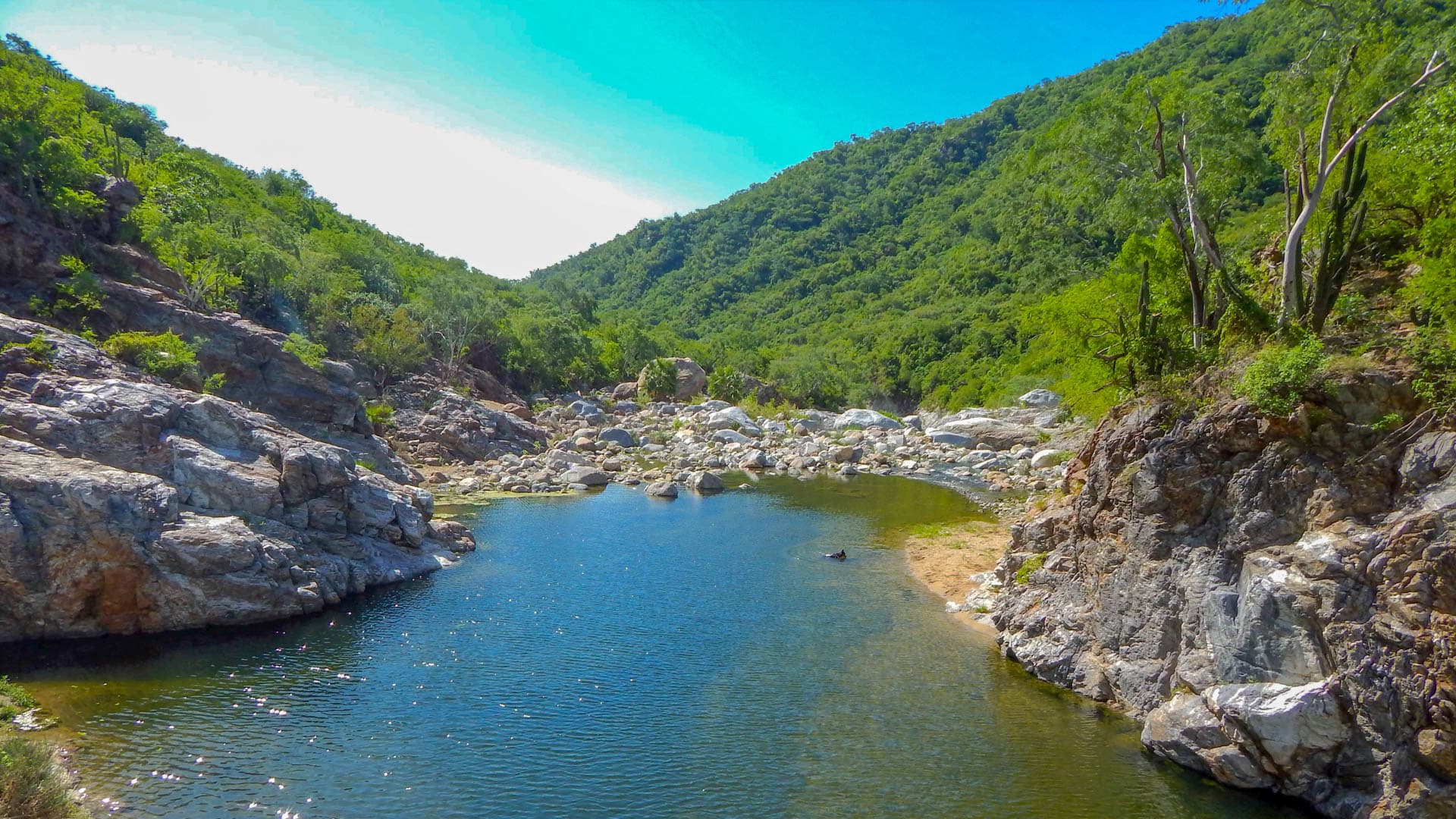I vividly remember the first time I heard about La Sierra de La Laguna, the mountain range located between Los Cabos and La Paz. My friend Carlos, 5th generation born and raised in Baja California Sur, shared with me tales of incredible experiences he had with friends and family in this special place. The stories varied from goblins and treasures hidden by pirates to wonderful waterfalls of crystalline waters and endemic gigantic trees that exist only in this region.
A few years later I had the opportunity to go up to the Sierra de la Laguna and understood for myself why Californianos and locals return year after year. The landscapes are impressive and the panoramic views from “El Picacho” show the end of the peninsula in a totally amazing way; the exact point where the Sea of Cortez meets the Pacific Ocean. Seeing the waterfalls with my own eyes was an unforgettable experience, especially knowing that it is this same water that is the life source for Los Cabos and La Paz. Most ex-pats are unaware that the Sierra de la Laguna biosphere reserve represents the main source of groundwater as it provides 67% of the state population with water.

Photo provided by Andreola Velleryd
The hike started in “La Burrera” where donkeys or mules are available for hire to carry supplies and camping equipment. It is essential to bring a backpack with food, clothes for a cold climate and enough water (4 liters) for the first hours of the trip. After filling our bottles in the first source of natural water, “El Agujito”, we realized how smart it was to source everything we needed in advance as during the entire trip you will not find any place to buy food or other supplies. The walk continues at least another 4 hours until the next stop, “La Ventana”, perfectly named as the views from here are like looking through a window at a picture perfect landscape. We camped in this area and slept until just before dawn. Around 4 AM we continued with the most difficult passage, “La Calambrina”, a steep and narrow rocky climb which also lives up to its name because once you get to the end you start to feel cramps in your legs. It was at the end of hiking this gap that the climate and vegetation changed radically; the cacti disappeared and were replaced by beautiful pine trees. I had the opportunity to see the black oaks and meet some very curious wild hogs that feed on the pine nuts that fall from the trees. We camped for two nights between the waterfalls and “El Picacho.” The stars in the night sky are a sight worth seeing!

Photo provided by Andreola Velleryd
It is recommended to visit La Sierra de la Laguna after the rainy season with November being the most popular month. Don’t forget to warn the authorities that you will visit this nature reserve and also to pay a permit if you travel along this road. There are other roads that you can take but the best known is the Pescadero – La Paz highway.
Sadly, I did not have the opportunity to see any goblins or traces of pirates but living in communion with nature and being able to share this wonderful experience makes me feel as rich and happy as if I had found the treasure of the infamous pirate “Captain Storm”. That story we will leave for later.

Photo provided by Andreola Velleryd
The Sierra de la Laguna is one of the most beautiful and least-explored areas of the Baja peninsula and UNESCO designated the 11,600 hectares of this mountain range a Biosphere Reserve in 1994. I wholeheartedly encourage you to visit this magical area and to pack accordingly!
Angie Villa
+52.624.158.6876
angie@theagencyloscabos.com






Good article, I want to go!